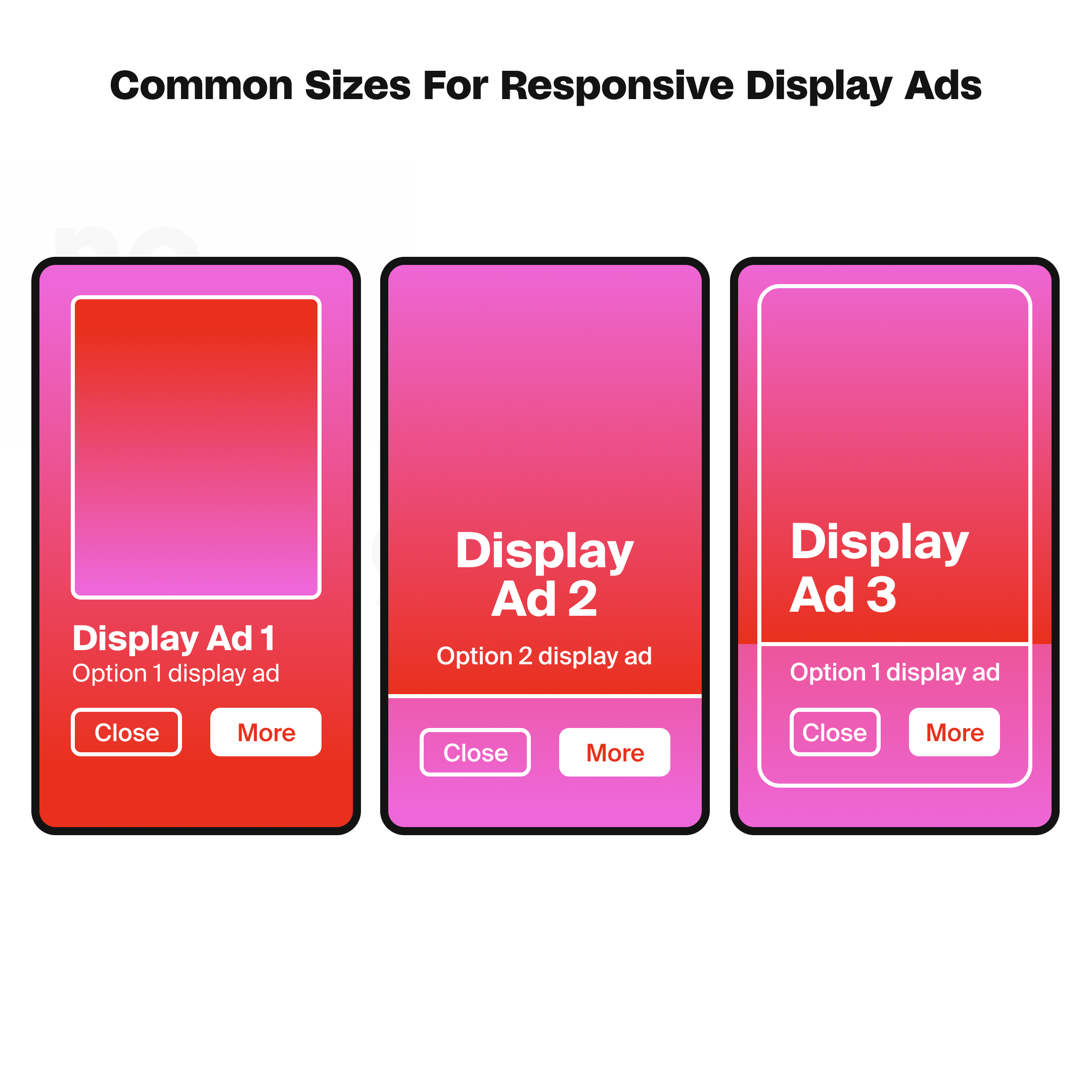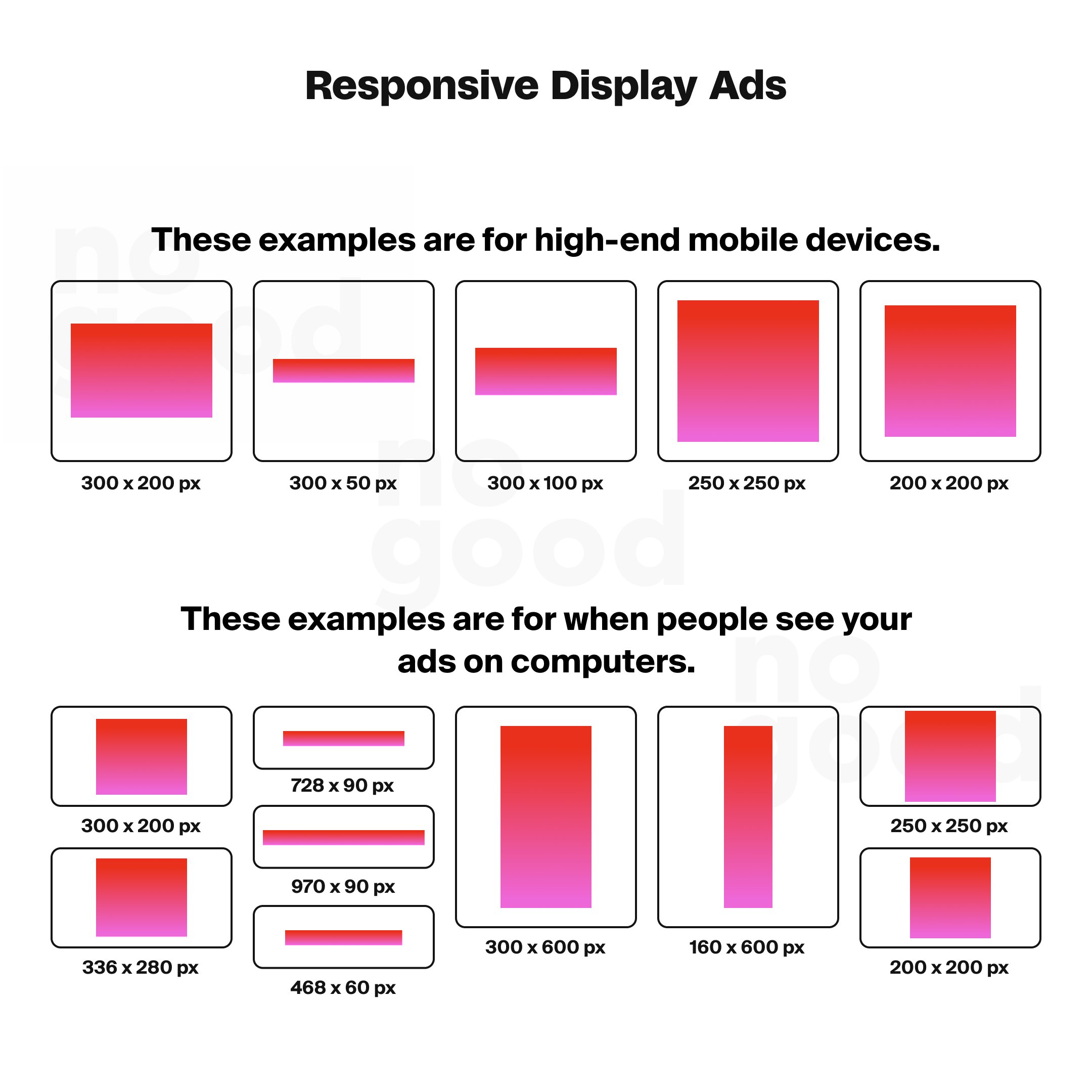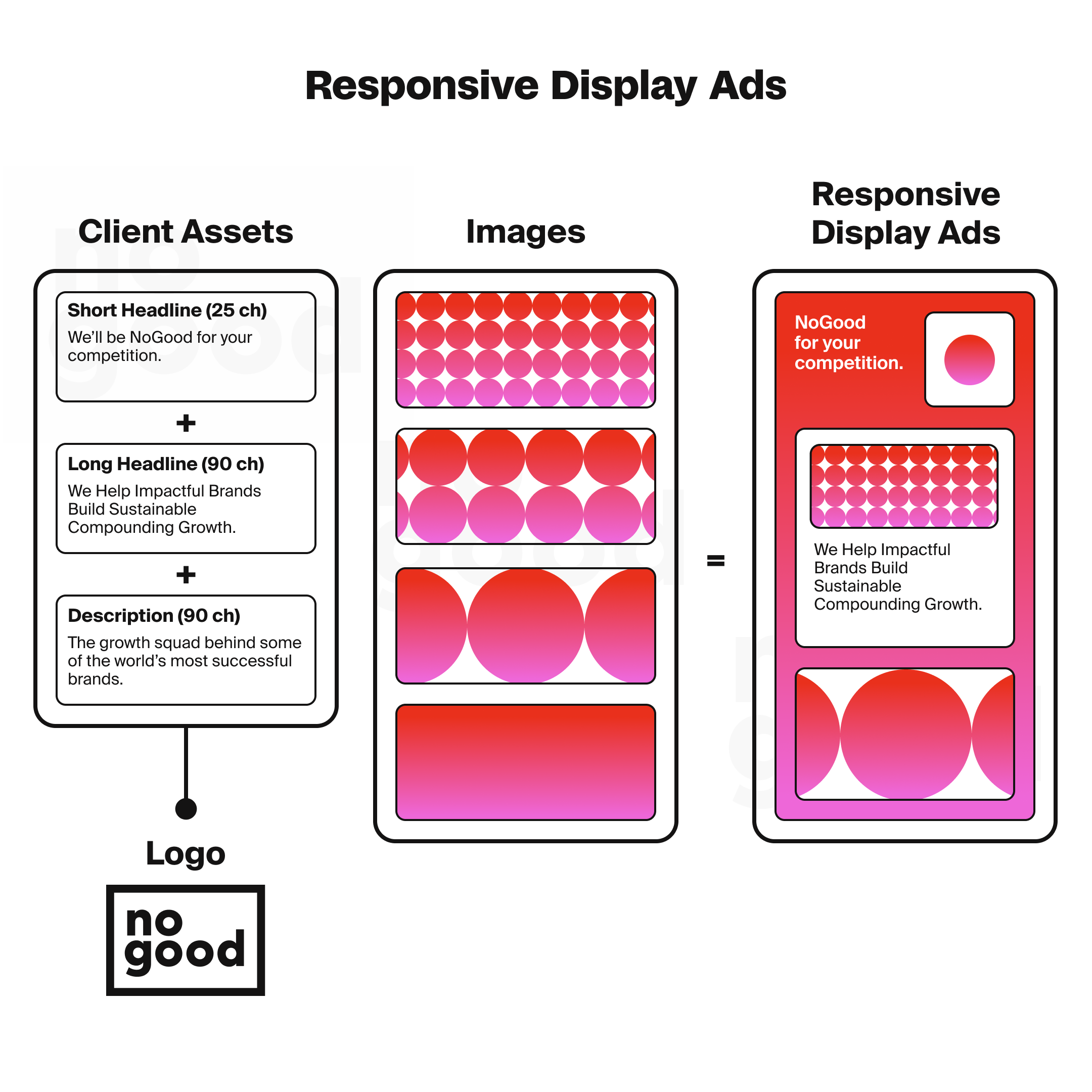Responsive Display Ads (RDAs) have emerged as a sophisticated solution, redefining how brands engage their audiences. These adaptive marvels seamlessly conform to diverse platforms and devices, presenting a compelling case for their integration into modern marketing strategies.
Picture and video ads effortlessly adapt to any screen size, seamlessly navigating the vast landscape of the internet to captivate wider audiences. As we dive into the heart of this digital revolution, we will talk about the secrets behind RDAs and discover why these adaptive ads deserve the spotlight in today’s advertising landscape. It’s time to embrace the future of personalized, dynamic, and effortlessly effective advertising – let’s talk RDAs!
Ready to enhance your digital advertising strategy?

Why should an advertiser consider using responsive display ads?
Responsive Display Ads represent a more dynamic and adaptive form of display advertising. Traditionally, advertisers had to manually create various ad sizes and formats to fit different websites and devices. With RDAs, this process becomes automated and more efficient.
Key Features of RDAs:
- Adaptability: RDAs automatically adjust their size and format to fit different spaces on websites and devices. This adaptability is crucial for ensuring the ad looks good on various screens and size formats, from large desktop monitors to smaller mobile devices.

- Asset Variety: Advertisers provide a mix of assets, such as headlines, descriptions, high-quality images, and logos. Instead of creating a static ad, algorithms combine these assets in different ways to create diverse and personalized ad experiences based on your wide audience’s intent and where it is reacting and ends up converting.
- Dynamic Content: RDAs are dynamic, meaning the ad’s content can change based on user demographics, interests, and online behavior. This personalization makes the ad more relevant to the individual seeing it.
- Automated Optimization: Google Ads uses machine learning algorithms to optimize the performance of RDAs. These algorithms analyze data and user interactions to determine which combinations of assets work best for different audiences and placements. This process occurs automatically over time, eliminating the need for advertisers to manually tweak and test their ads.
Evolution and Introduction:
The concept of responsive display advertising, where ads automatically adapt to different environments, is a product of advancements in machine learning and advertising technologies. Google introduced Responsive Display Ads as a feature within Google Ads to help advertisers streamline their display ad creation and enhance the effectiveness of their campaigns.
Appearance Across Different Ad Spaces:
RDAs can appear in various ad spaces across the Google Display Network, an extensive network of websites, apps, and platforms partnered with Google to display ads. These spaces can include:
- Websites: RDAs may appear on many websites on the Google Display Network. These could be news sites, blogs, e-commerce sites, and other content-rich pages.
- Mobile Apps: RDAs are designed to be responsive on mobile devices, making them suitable for placement within mobile apps. This can include apps for news, entertainment, gaming, and various other categories.
- YouTube: RDAs may appear as display ads on YouTube. They can be shown on YouTube videos and alongside other YouTube content, expanding the reach of the advertising campaign to a vast video-centric audience.
- Gmail: Google Display Network extends to Gmail, and RDAs can appear in Gmail inboxes as part of the display ad placements.
- Responsive Spaces: The term “responsive” in RDAs indicates that these ads automatically adapt to different screen sizes and formats. This adaptability allows them to fit into various ad spaces, including banner, square, and other standard ad sizes.
- Native Ad Spaces: RDAs may be displayed in native ad formats, seamlessly blending into the overall design and layout of the websites or apps where they appear. Native ads are designed to look and feel like natural, personalized content, enhancing user experience.

*Some credit advice to avoid funny size outcomes:
For greater control over your ad’s online appearance, consider unselecting specific auto-generated options during ad creation. By opting out of auto-enhancements, auto-generated videos, and native formats, you retain authority over your ad’s layout and prevent potential issues such as text cutoff or unintended cropping. This ensures a more tailored and professional presentation across diverse online platforms.
What is the main advantage of responsive display ads?
Having just explained all the different ad spaces those ads can fit into, you might think this is the main competitive edge of those ads. However, there is something much more powerful about those ads, and the answer is hidden in machine learning!
The critical advantage of Responsive Display Ads is their dynamic optimization, empowered by machine learning algorithms. By intelligently adapting to user behavior, RDAs automatically test and adjust combinations of provided assets—headlines, images, and descriptions—in real time. This streamlines the creative process for advertisers and significantly enhances the ad’s relevance to individual audiences.
For instance, imagine a fashion retailer employing RDAs. The system might showcase different combinations of product images and headlines tailored to users’ preferences, such as emphasizing formal wear for professionals and casual attire for those interested in leisure fashion. This dynamic approach ensures that the ad content resonates more effectively with diverse target audiences, maximizing engagement and conversion opportunities.
What’s one reason to use a responsive display ad?
Embracing Responsive Display Advertising offers advertisers a pivotal advantage by providing a streamlined and automated solution for adapting to diverse online environments. This expedites the campaign launch process and liberates marketers from the meticulous task of manual adjustments, enabling them to redirect their efforts toward cultivating innovative ideas and refining strategic initiatives.
Consider a scenario where an e-commerce brand utilizes RDAs. The automatic adaptability of these ads ensures seamless presentation across various platforms and devices, reducing the need for manual adjustments for each placement. As a result, marketers gain valuable time that can be allocated to exploring new audience segments, curating creative assets, and focusing on strategic elements such as refining messaging and value propositions.
Moreover, RDAs function as a time-saving mechanism, allowing marketers to delve deeper into campaign analytics and glean insights. With the burden of manual adjustments lifted, advertisers can concentrate on understanding campaign performance, identifying consumer trends, and implementing data-driven optimizations and informed decisions. This level of automation fosters a more agile and adaptive advertising strategy, aligning campaigns with evolving market dynamics.
In essence, RDAs ensure consistent and visually appealing ad presentations and empower marketers to operate with greater efficiency and strategic focus. The freedom from routine manual tasks enables professionals to elevate their roles as strategic thinkers and innovators, propelling campaigns to new heights based on actionable insights and creative refinement.
When should you use responsive display ads?
Choosing RDAs is a strategic move that offers advertisers a dynamic solution to adapt to diverse online spaces seamlessly. The automated adaptability expedites campaign launches and liberates marketers to focus on innovation. This freedom from manual adjustments allows for strategic concentration on refining creative assets, exploring new audience targeting, and leveraging data insights for an agile and adaptive advertising strategy. In essence, RDAs ensure efficiency and empower marketers to elevate their roles as strategic thinkers, creating visually appealing campaigns with a refined focus on performance and audience engagement.







